Physical Address
304 North Cardinal St.
Dorchester Center, MA 02124
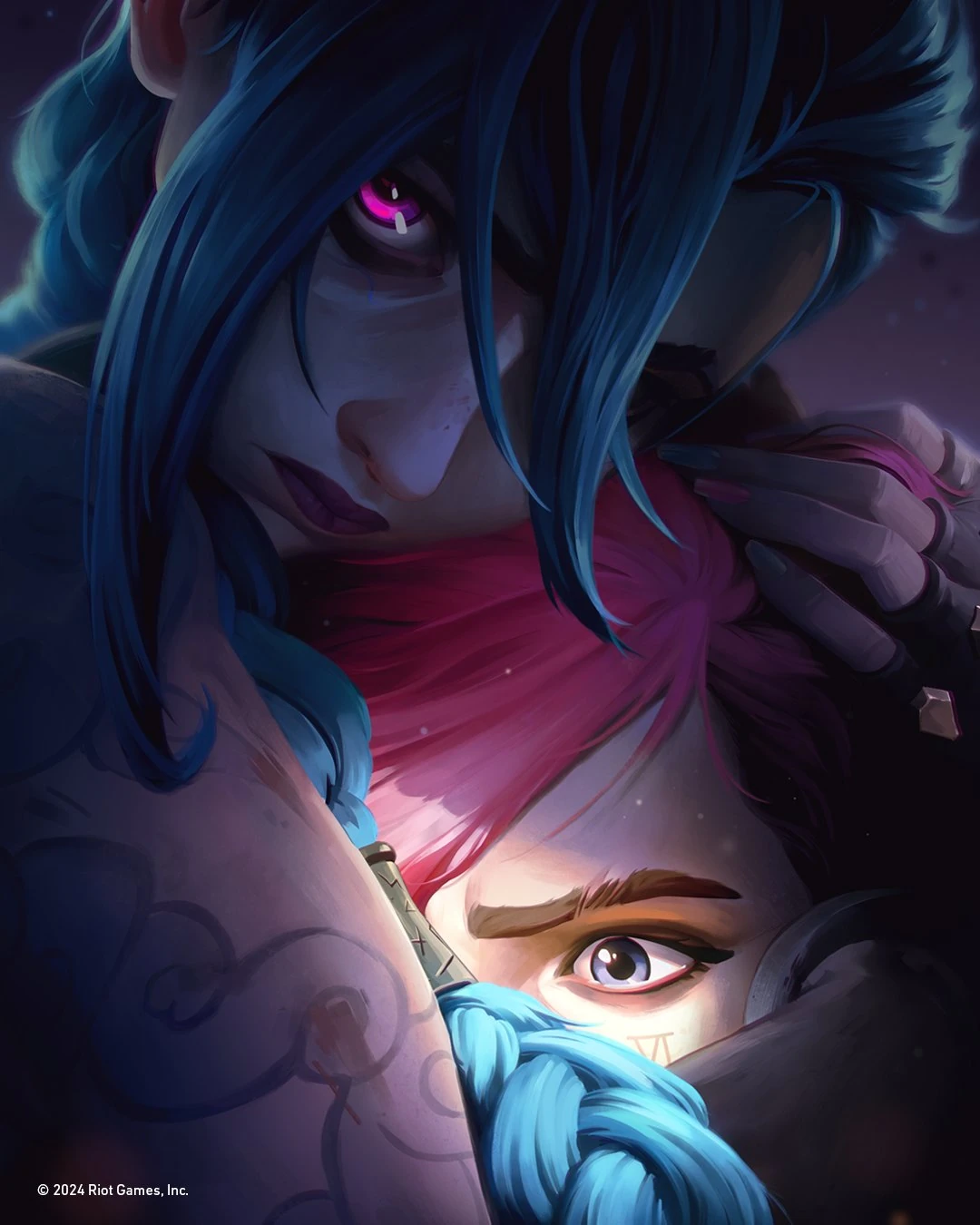
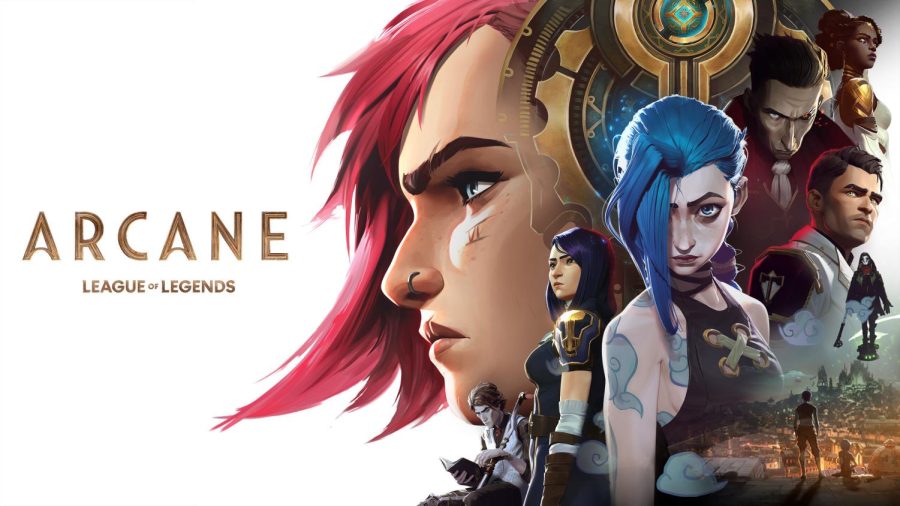
Every now and then, a show will pop up in my streaming queue that I just can’t ignore. Recently, I’ve been knee-deep in Apple TV+ content, working my way through everything I could during a free trial. There’s a lot of quality stuff there, but in the middle of my Apple TV+ binge, something on Netflix stopped me in my tracks: Arcane: League of Legends.
Now, while I’m all about fantasy, sci-fi, and anime, I’d never played League of Legends, so this was purely curiosity. Seeing an animated show based on a video game trending in the number one slot on Netflix piqued my interest, and I thought, “What’s all the hype about?”
As a complete newcomer to the League of Legends world, I knew I’d need to get some background to fully understand what I was getting into. Arcane isn’t just an ordinary adaptation; it was developed by Riot Games, the creators of League, and Fortiche Production, a French animation studio known for their innovative, hybrid style.
The more I looked into it, the more impressed I was by the thought and care that had gone into this production. Riot Games and Fortiche didn’t just decide to throw something together and slap it on a screen. Instead, they worked together closely for years to make sure the show was true to League’s complex world and characters, building a show that could stand on its own, even for people like me who’ve never played the game.
I learned that Arcane is set in two highly contrasting regions: Piltover, known as the “City of Progress,” a prosperous, innovation-driven metropolis, and Zaun, Piltover’s shadowy, polluted underbelly. Riot and Fortiche wanted to bring these two cities to life in a way that would feel both visually compelling and emotionally impactful.
Piltover and Zaun are central to League’s lore, representing different sides of a society shaped by technology, power, and survival. The creators’ dedication to world-building shines through here, creating a fascinating backdrop that appeals to fans of sci-fi, fantasy, and steampunk aesthetics. Even before I hit play, I was intrigued by this world.
The creators behind Arcane also made an interesting choice by bringing in music composer Christian Linke and writer Alex Yee, both veterans of Riot Games. Linke had worked on League’s soundtrack and champion themes, while Yee had been part of the character development team, giving them a deep understanding of the League universe and its characters.
That meant Arcane wasn’t just a random take on a popular game; it was being crafted by people who knew the story inside and out. And then there was Fortiche Production, who I discovered had been working with Riot for years, creating music videos for League tracks like “Get Jinxed” and “Warriors” by Imagine Dragons. Their work with hand-painted textures and stylized 3D animation had already given League fans a taste of what they could do, making Fortiche the perfect fit to bring Arcane to life in a fresh and immersive way.
And let’s talk about Fortiche’s animation style, which had me hooked from the first frame. Their blend of 2D and 3D animation, using textured visuals that feel like oil paintings, was unlike anything I’d seen before in an animated series. Instead of the typical look you’d find in animation, Fortiche created a world that feels gritty, textured, and almost tangible.
It’s as if each frame could be a painting hanging in a gallery, and that level of artistry drew me in immediately. The bumper before the episode even starts was a visual treat. It’s designed like an old-world jukebox but with a fantastical, archaic look, setting a mood that feels a bit steampunk and a bit medieval. Even before the first scene, I knew I was in for something special.
And so, I hit play on episode one with a mix of excitement and curiosity. The moment the haunting, atmospheric music kicked in and I saw the burnt-red sky looming over a broken cityscape, I felt like I’d been transported to a different world. I paused the episode a few times just to take in the details, especially with the pastel, oil-painting-like aesthetic blending seamlessly with 3D rendering. The result? A world that feels lived-in, gritty, and grounded, yet distinctly fantastical.
Watching Arcane with fresh eyes, as someone who’s never played League of Legends, gave me a unique perspective. I wasn’t caught up in comparing it to the game or analyzing every detail for accuracy. Instead, I could just enjoy it for what it was—a beautifully crafted, atmospheric story with complex characters and an engaging plot. And right away, I knew this was a show I had to tell people about.
For anyone out there who’s also been on the fence, wondering if Arcane is worth catching up on, here’s my take. Even if you’re new to League and don’t know any of the lore, this series has so much to offer. So, here are five reasons why Arcane is absolutely worth the watch, whether you’re a fan of the game or just someone looking for an incredible new show.
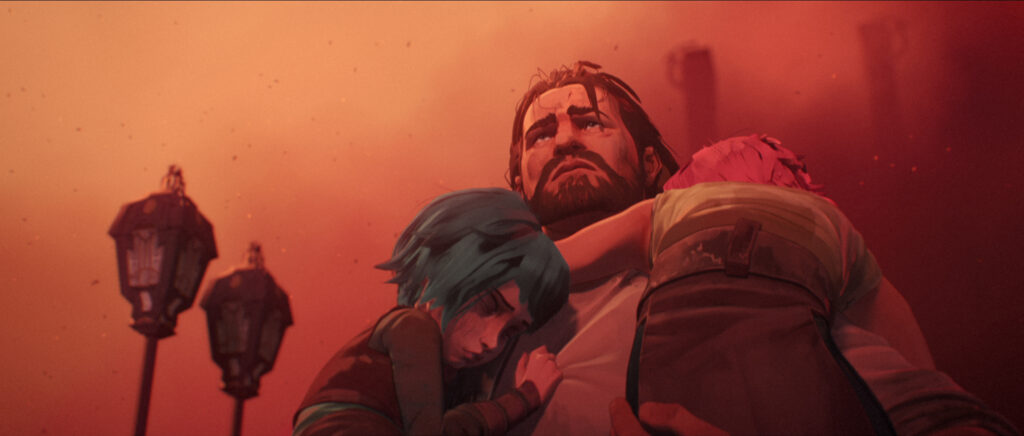
One of the most surprising and captivating things about Arcane is just how deep it goes emotionally, right from the first episode. Considering it’s rated TV-14 and technically made for a younger audience, the quality of the storytelling is even more impressive. You’d think an animated series based on a video game would stick to action and spectacle, but Arcane goes much further, building real, meaningful stakes for its characters and their relationships.
This isn’t just another high-energy, combat-driven story; it’s a deeply personal journey where every choice and consequence feels significant. From the very beginning, the show makes it clear that it’s not afraid to explore darker, more complex themes, drawing viewers of all ages into an emotionally layered world that goes beyond typical fantasy.
Right away, we’re introduced to Vi and Powder, two sisters who are trying to survive in a harsh, divided world. Their relationship is at the heart of the show, and It’s portrayed in a way that feels raw and authentic. The stakes in Arcane aren’t just about saving the world or defeating some abstract evil; they’re about survival, family, and the emotional fallout of difficult decisions.
As you watch these characters navigate their world, you can feel the weight of their choices pressing down on them, and you’re pulled into their struggles, triumphs, and losses. This kind of storytelling makes every scene matter, and it quickly becomes clear that Arcane is a show that cares as much about its characters’ inner lives as it does about the action on screen.
One moment that stands out early on is the flashback scene where we see Vi and Powder as young children, wandering through the aftermath of a battle, hand in hand. There’s this haunting red sky and wreckage all around them, with smoke drifting through the air. You can feel the sadness and desperation in that scene—the loss these two characters have already faced.
When an adult finally finds them and offers some comfort, it’s not just a relief; it’s a glimmer of hope in a world that feels brutal and unforgiving. It’s a scene that instantly makes you root for Vi and Powder, not because they’re heroes, but because they’re vulnerable and relatable, struggling against forces beyond their control.
Arcane doesn’t just use emotion to add drama, either; it builds entire story arcs around the characters’ personal stakes. Each action they take, each risk they run, is driven by a powerful emotional undertone, whether it’s Vi’s fierce loyalty to her sister or Powder’s desperate desire to prove herself. These aren’t simple, one-dimensional characters—they’re complex individuals with motivations that feel genuine. And as they face the challenges and dangers of their world, you can see how these experiences start to shape and define them in ways that feel painfully real.
This commitment to emotional storytelling makes every conflict more intense and every victory more rewarding. When Vi and Powder are chased by the city’s enforcers, It’s not just an action sequence—it’s a life-or-death moment that shows how far they’re willing to go to survive. The danger feels immediate, and the stakes feel real because the show has grounded you in these characters’ emotions.
And when things go wrong, when choices have consequences, Arcane doesn’t pull any punches. It’s not afraid to show the toll of their world on its people, making it clear that nothing is guaranteed and that losses can hit hard.
By rooting its story in genuine emotions and real stakes, Arcane elevates itself far above what you might expect from an animated video game adaptation. It takes its characters seriously, and it invites viewers to do the same. Every moment feels like it matters, not because of grand heroic feats, but because of the deeply personal struggles and choices that drive the story forward. And that, perhaps more than anything, is what makes Arcane so compelling.
It’s not just a world of magic, technology, and combat—it’s a world where every emotion, every bond, and every risk feels significant. In Arcane, you’re not just a spectator to the action; you’re emotionally invested, right alongside the characters, in every twist and turn of their journey.
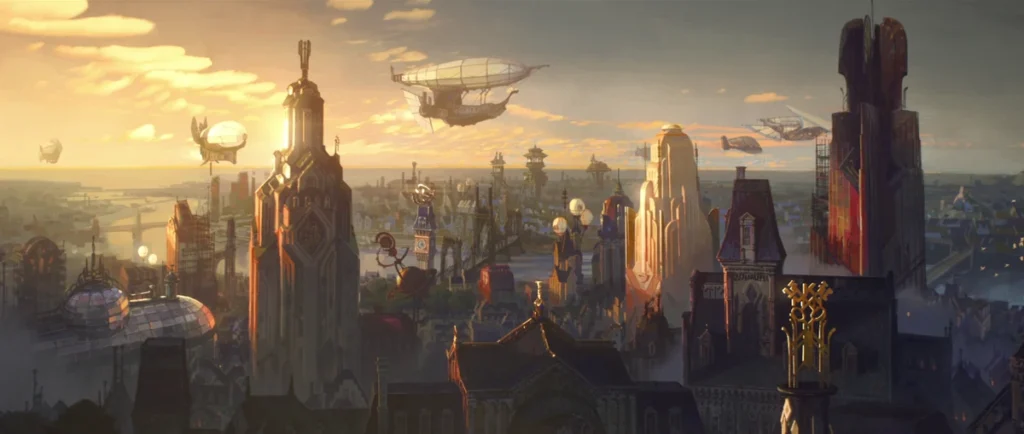
One of Arcane’s most captivating elements is the rich, layered world it introduces from the start. While many fantasy shows and games draw you into magical realms, Arcane’s world feels unique, intricate, and lived-in. The series is set in Runeterra, the vast universe of League of Legends, but instead of overwhelming the viewer with its complexity, it starts with two contrasting cities: Piltover and Zaun. Each city has a distinct atmosphere, culture, and socio-economic backdrop that quickly draws you in, making the world feel more like a character itself.
Piltover is the “City of Progress,” a prosperous hub of technology and innovation that shines with towering skyscrapers, sleek machinery, and a sense of order. It’s a place that values advancement, where the elite live in comfort, surrounded by the fruits of their scientific and industrial achievements. But Piltover’s progress comes at a cost, and we’re shown that this city’s success is only possible because of its harsh treatment of its neighboring city, Zaun. Piltover’s polished, optimistic façade hides a deep imbalance of power, wealth, and opportunity—a theme that resonates powerfully as the story unfolds.
On the flip side, Zaun is Piltover’s dark twin. Known for its poverty, pollution, and chaos, Zaun feels like a world apart, yet it’s physically close enough to Piltover that you’re reminded of how stark the contrasts are. In Zaun, people struggle to survive among the industrial waste and crumbling infrastructure, relying on their wits, resilience, and whatever they can scavenge.
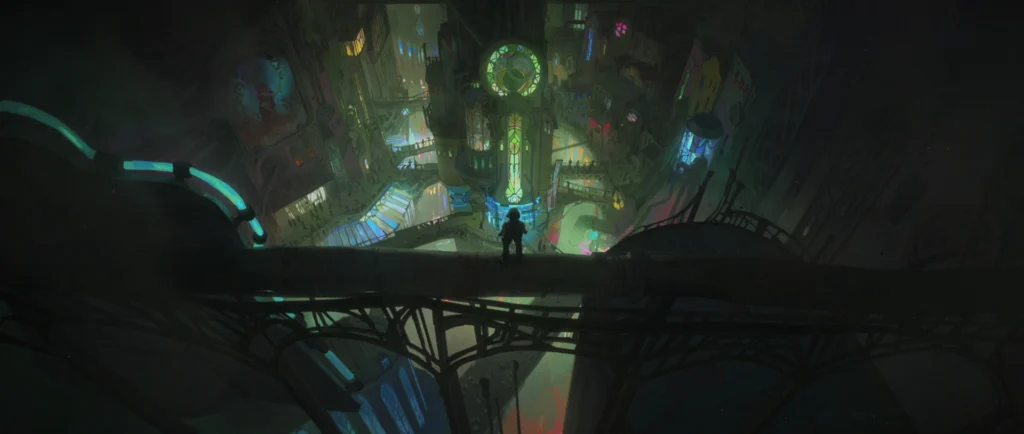
The show doesn’t romanticize this setting, either. Zaun is raw and unforgiving, filled with dark alleys, gritty neighborhoods, and shadowed underground streets. But while it may lack Piltover’s polish, Zaun is also home to people who are fiercely loyal and resourceful, making it clear that this city has its own kind of strength.
One of the most impressive aspects of Arcane’s world-building is how seamlessly it blends these contrasting places. The show’s creators didn’t simply design Piltover and Zaun as opposites; they created an intertwined relationship between them that feels natural and inevitable. Piltover’s progress literally towers over Zaun, its skyscrapers casting shadows over the poorer neighborhoods below.
This isn’t just symbolic; the physical structure of Piltover above and Zaun below sets the stage for a story about class struggle, power dynamics, and survival. You can see this play out in everything from the technology they use to the way the people interact, with each city affecting the other in ways that feel deeply embedded in the story.
It’s also clear that Arcane’s creators took inspiration from steampunk aesthetics, giving the cities a fantastical, industrial look that’s both unique and visually rich. From Piltover’s sleek airships to the rough, cobbled-together machinery in Zaun, every part of this world has been carefully designed to fit its environment.
The details are incredible—each setting feels real, full of history, and deeply connected to its inhabitants. There’s a scene where a group of kids is running across the rooftops of Zaun, with a beautiful backdrop of towering buildings and smoky skies, capturing both the danger and beauty of the world they live in. Even simple moments, like Vi and Powder sitting on a rooftop overlooking the city, highlight the complexity and allure of this divided world.
And it’s not just the physical settings that make Runeterra intriguing; it’s the cultural and political tensions woven into the story. Each region has its own history, values, and conflicts that drive the characters’ motivations and shape their worldviews. The difference between Piltover and Zaun isn’t just a matter of rich and poor—it’s a divide rooted in a complex mix of politics, innovation, survival, and power. These aren’t empty backdrops or generic fantasy lands; they’re fully developed places that feel like they exist outside of the story, with layers that make you want to dig deeper into their histories and secrets.
What’s even more impressive is how accessible this world is to newcomers. You don’t need to have played League of Legends or know Runeterra’s lore to appreciate it. Arcane introduces you to its world gradually, drawing you in without overwhelming you with exposition.
Instead, you learn about Piltover and Zaun through the characters’ experiences and interactions, making it easy to grasp the stakes and dynamics even if you’re new to this universe. By grounding the story in real conflicts and relatable struggles, Arcane makes its world both epic and intimate, inviting viewers to explore without needing a guidebook.
In a genre where it’s easy for fantasy worlds to feel generic or overly complicated, Arcane stands out with its nuanced world-building. It’s not just about magic or technology; it’s about the clash of ideals, the cost of progress, and the lives of people caught between two worlds.
Whether you’re a fantasy lover, a sci-fi fan, or just someone who appreciates a well-built world, Arcane’s setting is one of the most compelling reasons to dive into this series. It’s a place where every scene feels layered with meaning, where the cities themselves have personalities, and where the struggle for survival feels both epic and deeply personal.
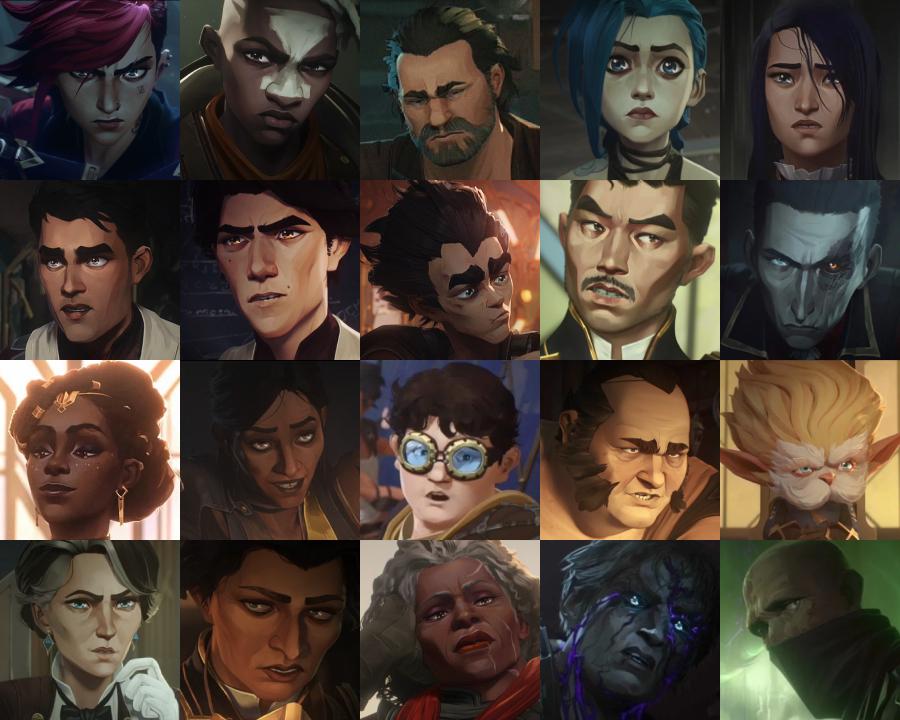
Arcane doesn’t just excel in its visuals and world-building—it also shines in creating characters that feel layered, relatable, and deeply human. From the very first episode, it’s clear that this show is committed to telling the story of characters who aren’t just defined by their roles as “heroes” or “villains,” but by their struggles, their dreams, and their relationships. This emotional depth brings Arcane’s world to life in a way that few shows manage, and it makes the stakes feel incredibly real.
The show centers around the bond between two sisters, Vi and Powder, who have been through unimaginable hardship together. Both of them are trying to survive in the harsh world of Zaun, and their relationship is the heartbeat of the story. Vi is the older sister, tough and determined, but also fiercely protective of Powder.
She’s a fighter, both in spirit and in action, and her courage is balanced by a deep sense of responsibility toward her younger sister. Vi’s struggles are relatable in so many ways, especially her willingness to sacrifice her own safety to look after Powder. She’s flawed, makes mistakes, and sometimes lets her emotions get the best of her—but that’s exactly what makes her feel real.
On the other hand, Powder is the younger, more vulnerable sister, and her journey is equally compelling. Powder’s character is portrayed with a level of depth that makes her instantly sympathetic. She’s innocent, but she also craves validation, wanting to prove herself to Vi and the rest of their group. There’s a scene early on where she holds onto a precious gem she found, clutching it as if it holds the key to her self-worth.
Her need to belong, to be seen as capable, is something that many viewers can relate to, and it adds layers to her character that go beyond her role in the story. As you watch her navigate her fears, insecurities, and moments of bravery, Powder becomes a character you can’t help but root for.
Arcane also doesn’t shy away from exploring the darker sides of its characters. This isn’t a story about perfect people making the right choices—it’s about flawed individuals making decisions in a world that often gives them no easy options. Vi and Powder face challenges that test their bond, and as the stakes rise, their relationship becomes even more complex. You can see how their love for each other is mixed with frustration, misunderstanding, and moments of doubt. This realistic portrayal of sibling dynamics adds depth to their characters, making their journey feel raw and relatable.
And the complexity doesn’t stop with Vi and Powder. Arcane introduces a cast of side characters, each with their own motivations and backstories that feel just as rich. Vander, for example, is a father figure to the sisters and a community leader in Zaun. He’s someone who has been through his own battles and now tries to bring stability and guidance to those around him. His character shows a different kind of strength—the strength to walk away from violence and try to find peace in a world that doesn’t easily allow it. Vander’s choices, his regrets, and his relationship with the sisters add another layer of emotional weight to the story.
This emotional complexity extends even to the antagonists. Arcane doesn’t present its villains as one-dimensional bad guys. Instead, it gives them motivations and backgrounds that make their actions, if not justifiable, at least understandable. The antagonists are products of the same world, shaped by the same challenges and limitations as the protagonists. This nuance is refreshing, especially in an animated series, and it reinforces the idea that the conflicts in Arcane aren’t just black and white—they’re shades of gray, with each character walking a path shaped by their own experiences and struggles.
What’s truly impressive is how Arcane manages to develop these characters in such a short span of time. By the end of the first episode, you already feel like you know Vi and Powder on a personal level. Their hopes, fears, and dreams are laid bare, making you care about what happens to them as the story unfolds. It’s rare for a show to achieve this level of emotional connection so quickly, and it’s a testament to the writing and voice acting that bring these characters to life. The actors infuse each line with authenticity, adding subtle emotional layers that make the characters feel real and relatable.
Ultimately, Arcane’s characters are what elevate the show beyond a standard fantasy or action series. They’re individuals with depth, whose decisions have real consequences, and whose personal struggles resonate on a human level. Whether it’s Vi’s determination, Powder’s vulnerability, or Vander’s quiet strength, these characters feel like people you might know or even relate to. And as you watch their journeys, you become invested in their outcomes, feeling every high and low as if you’re right there with them.
This commitment to character depth is what makes Arcane so compelling. You’re not just watching a story unfold; you’re getting to know people who feel complex, real, and flawed in ways that resonate long after the episode ends. In a world full of fantasy and action, it’s the humanity of Arcane’s characters that keeps you coming back, wanting to see where their choices will lead them next.
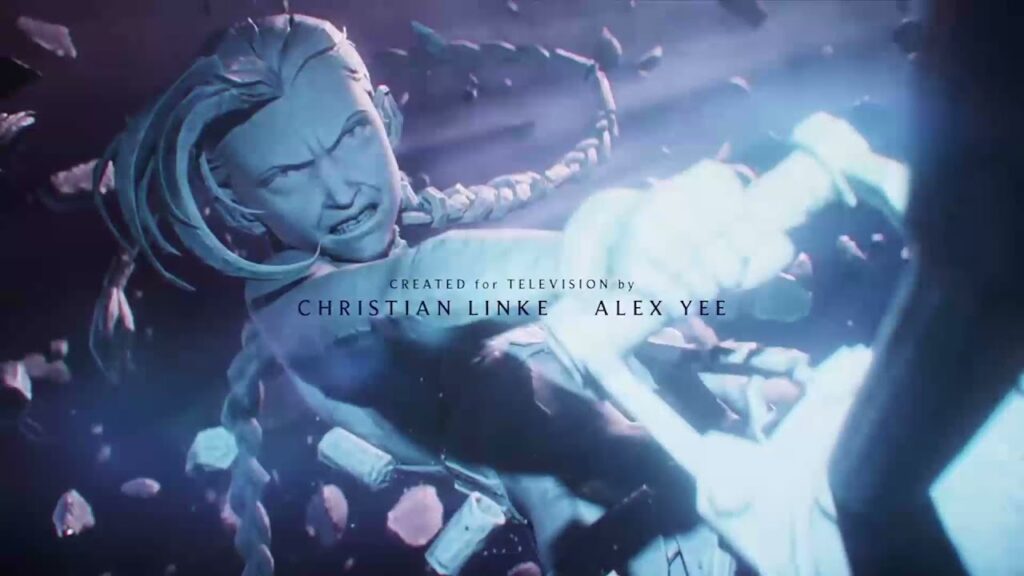
If there’s one thing that Arcane absolutely nails, it’s style. From the very first frame, the show’s animation feels like nothing else out there, pulling you into a visual experience that’s both stunning and uniquely Arcane. Fortiche Production, the French animation studio behind Arcane, has developed an aesthetic that combines the grittiness of 2D art with the depth of 3D rendering, creating a visual style that feels textured, almost tangible. Every frame looks like it could be a painting—raw, vibrant, and packed with details that demand attention.
The color palette and animation style are both distinct and incredibly effective at setting the tone. Zaun’s dark, polluted streets and Piltover’s bright, bustling avenues look worlds apart, yet they blend into each other seamlessly, creating a cohesive yet contrasting atmosphere. The creators didn’t just make these cities look different; they made them feel different, capturing the essence of both worlds in a way that enhances the story.
Piltover, the “City of Progress,” gleams with industrial opulence, while Zaun is drenched in shadows and grit, with green-tinted lights illuminating streets that are packed with a kind of dangerous charm. The contrast is immediate and powerful, grounding the viewer in the physical and emotional divides of this world.
And it’s not just about the cities. Fortiche took their artistry a step further by embedding emotions and mood into each scene. There’s a particular texture to the animation that gives every surface, from walls to clothing, a hand-painted, almost oil-pastel quality. This choice isn’t just aesthetic; it makes the world feel worn, lived-in, and full of history. Whether it’s the rundown rooftops of Zaun or the clean, steely lines of Piltover’s towering architecture, every shot is meticulously crafted to draw the viewer in. There’s a gritty realism in the details that makes the story feel grounded even as it dives into fantasy.
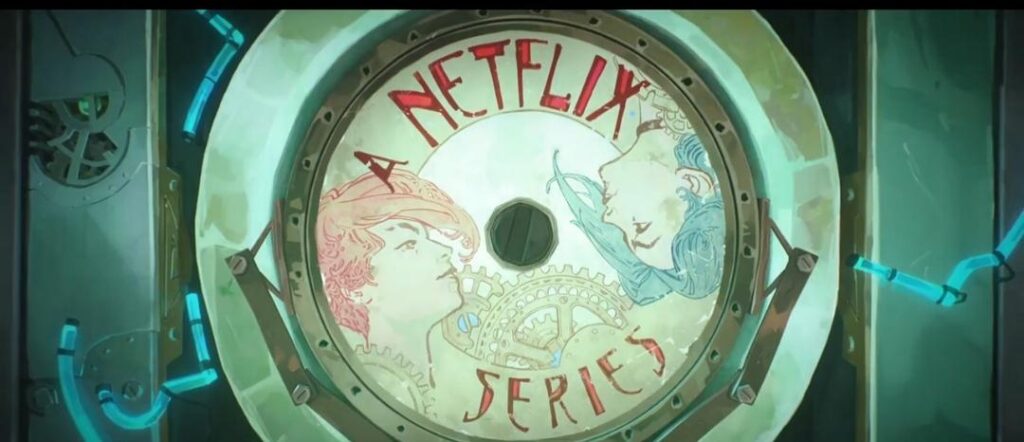
One of the standout visual moments is the opening bumper—usually a quick logo flash that we skip, but Arcane’s is anything but typical. The “jukebox” intro is styled like a steampunk record player but with a fantastical twist. Lit by a green, potion-like glow, it feels almost magical, as if it’s setting the stage for something epic. This small touch, combined with the Imagine Dragons theme song, gives Arcane an immediate sense of style. It feels fresh, modern, and edgy, blending fantasy with a hip, almost rebellious vibe that fits the characters and story perfectly.
The stylish, hip presentation goes beyond just the opening. The choice of Imagine Dragons for the theme song speaks to the show’s connection with modern pop culture, making it feel current and relatable. Their music, combined with sweeping shots of statuesque warriors and haunting cityscapes, gives the opening sequence an edge that sets it apart. It doesn’t feel like a typical fantasy or steampunk show; instead, it has a distinct, urban energy that makes it stand out in a genre that can sometimes feel repetitive.
But it’s not just about looking cool. Arcane’s unique style and presentation are also functional, enhancing how the story feels. The animation captures not just the physical action, but the emotional intensity as well. During fight scenes, the raw, unfiltered aesthetic amplifies the sense of danger and desperation. The close-up shots of Vi and Powder’s expressions, highlighted by the show’s detailed art, let viewers see the subtle shifts in their emotions, making the stakes feel all the more real. The fact that the show uses a style that’s so different from traditional animation formats gives it an immersive quality, making the fantasy world feel closer to our own.
And let’s talk about the action sequences. The combination of 3D rendering with hand-painted textures makes every movement, every punch, feel visceral. There’s a weight to the characters’ actions that you can feel—like the powerful slow-motion shots of Powder clutching her gem or Vi charging at her enemies. It’s not just about the action, though; it’s about making every moment count. Whether it’s the adrenaline-pumping parkour scenes or quiet moments on the rooftop, the animation and style add depth to the characters’ emotions and make their experiences resonate.
Ultimately, Arcane’s unique animation and hip presentation style aren’t just a treat for the eyes; they’re a critical part of what makes the show so engaging. The combination of stunning visuals, gritty realism, and a fresh, edgy tone create an experience that pulls you in and makes you want to keep watching. It’s a world that feels both fantastical and grounded, visually rich and yet relatable. Whether you’re a fan of fantasy, animation, or simply great storytelling, Arcane offers a style that’s impossible to ignore and a vibe that’s as captivating as it is unique.
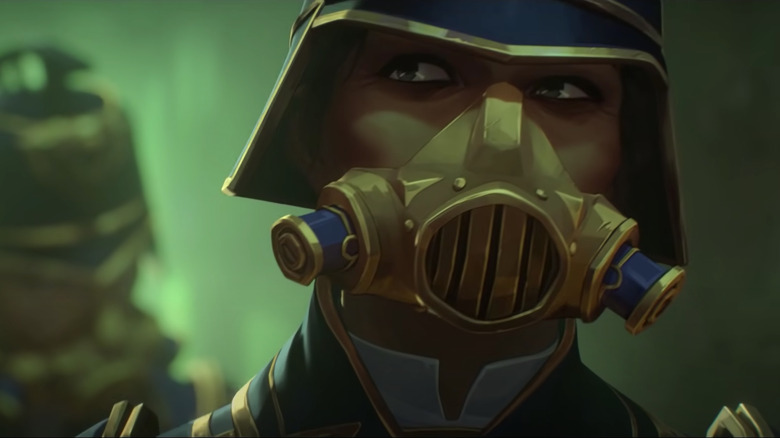
One of the most impressive aspects of Arcane is how accessible it is for people who have never touched a League of Legends game in their lives. While arcane is packed with lore and characters drawn from the League universe, you don’t need to know any of it to become immersed in the story.
As a newcomer to the series, I can say that I went in with zero background knowledge of League of Legends, and yet, from the first episode, I felt completely at home in the world of Arcane. The show does an exceptional job at welcoming everyone, both die-hard fans of the game and those who are discovering it for the very first time.
What makes Arcane particularly inviting to non-gamers is the way it builds its story without relying on prior knowledge or Easter eggs. Instead of throwing in references that only long-time fans would recognize, the show focuses on crafting a self-contained narrative that anyone can follow. The world-building is rich and layered, but it’s introduced in a way that doesn’t overwhelm.
Each detail is revealed naturally through the characters and their journeys, making it easy to understand the stakes and dynamics without needing a backstory. The divided cities of Piltover and Zaun, the power struggles, the social divides—these are relatable, universal themes that anyone can understand, regardless of gaming experience.
The characters are a big par’ of what makes the show accessible. Vi, Powder, Vander, and the rest aren’t just placeholders for “heroes” or “villains”—they’re fully realized individuals with motivations, flaws, and dreams that resonate on a human level. Watching Vi and Powder’s bond and struggles, you’re not left feeling like you’re missing some hidden game lore.
Instead, you’re simply drawn into a story about survival, family, and ambition. The emotional complexity of these characters is something that transcends the game itself, appealing to anyone who appreciates storytelling that digs deep into human emotions. By grounding the plot in relatable, character-driven conflicts, Arcane makes it easy for anyone to connect with the story.
Additionally, the show’s creators made a smart decision by keeping the focus on a few key locations and conflicts rather than diving into the entire League of Legends universe all at once. League has an extensive, intricate world with numerous regions and champions, but Arcane chooses to center its story around Piltover and Zaun, two cities with a built-in dynamic that feels immediately engaging.
By exploring the technological advancements and social divides between these two regions, the show creates a grounded, focused narrative that’s easy to follow. You don’t need to understand the history of Runeterra, the game’s universe, to appreciate the tension between Piltover’s elite and Zaun’s marginalized communities. The divide between these two cities feels real and relevant, a story that could exist outside of any gaming context, which makes it all the more appealing to new viewers.
The themes in Arcane also help make it universally appealing. The show dives into complex ideas—class struggle, the cost of progress, loyalty, ambition—that are timeless and relatable. Piltover’s hunger for progress at any cost, contrasted with Zaun’s fight for survival, brings a level of realism and relevance to the story that doesn’t depend on the game’s backstory.
These are themes that anyone can understand, whether you’re a gamer or not. And because the show builds its conflicts around these big ideas rather than game-specific lore, it opens the door for viewers of all backgrounds to get invested.
The presentation style also plays a huge role in making Arcane accessible. The edgy, hip tone, complete with a modern soundtrack and stunning visuals, gives it a cool factor that appeals across generations. Whether you’re an anime fan, a fantasy buff, or just someone who appreciates high-quality animation, the show’s visual style is something that pulls you in. It doesn’t feel like a show made exclusively for gamers; it feels like a high-end animated series that can hold its own alongside anything else on streaming platforms.
And for those who are fans of the game, Arcane still has plenty to offer without sacrificing its accessibility. The depth of the storytelling and the level of detail in the world-building add layers for fans who want to explore every corner of the League universe, while still keeping the main plot and themes straightforward enough for newcomers. The beauty of Arcane is that it offers something for everyone. Long-time League fans get to see their favorite champions come to life, and newcomers get an immersive, well-crafted story that stands entirely on its own.
In short, Arcane is a show that invites everyone to the table, whether you’re familiar with League of Legends or not. By focusing on universal themes, relatable characters, and a strong, self-contained story, it creates an experience that anyone can enjoy. So, if you’ve been hesitant to dive into Arcane because you’re not a gamer, don’t let that stop you. This is a series that’s made to be accessible, engaging, and enjoyable for everyone, proving that great storytelling can bridge any gap.
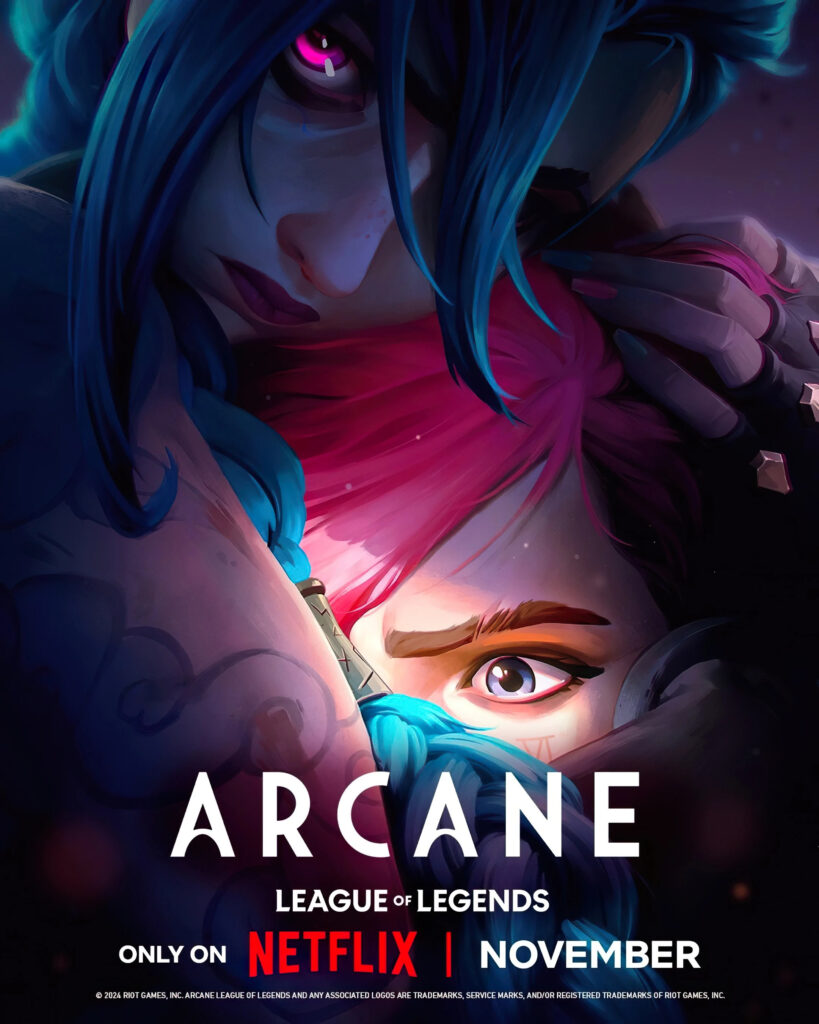
After watching just the first episode, I can say that Arcane is absolutely worth the hype. It’s more than just another video game adaptation—it’s an experience that combines incredible animation, intense storytelling, and complex characters to create something that feels fresh, exciting, and immersive. The show stands strong on its own, so whether you’re a long-time League of Legends fan or someone who’s never even picked up the game, Arcane delivers a story that grabs you from the start and doesn’t let go.
What Arcane does so well is blend the visual spectacle with real emotional weight, grounding its fantasy world in relatable human experiences. The conflict between Piltover and Zaun, the stakes in Vi and Powder’s relationship, and the gritty, steampunk-inspired setting make it feel like you’re watching something crafted with passion and attention to detail. It’s the kind of show that pulls you in visually, then hooks you emotionally with characters you care about and a world that feels both magical and grounded in reality.
If you’re on the fence about diving into Arcane, take it from someone who started with zero background on League of Legends: it’s absolutely worth it. The series gives you everything you need to get hooked, with layers that only get richer as you go. So, grab some popcorn, sit back, and get ready to be transported into a world where every frame, every beat, and every character moment is crafted to keep you wanting more. Arcane isn’t just worth catching up on—it’s a must-watch.

Curious about what our monthly digest offers? Head over to our newsletter page to learn more, or simply sign up below to get The Stream Snob Monthly Digest with the best streaming picks, exclusive insights, and the latest trends across all major platforms, delivered straight to your inbox!
Subscribe to our newsletter!